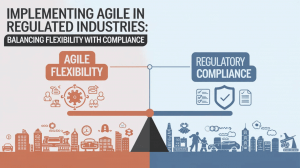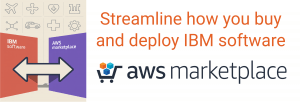Implementing Agile in Regulated Industries: Balancing Flexibility with Compliance

Agile methodologies have changed software development, promoting flexibility, collaboration, and customer-centric approaches. However, implementing Agile in regulated industries — such as automotive, medical devices, aerospace and defense, and financial services — presents unique challenges. These sectors must adhere to regulatory requirements to ensure safety, security, and compliance. This blog explores how organizations in regulated industries can successfully adopt Agile while maintaining compliance.
The Need for Agile in Regulated Industries
Traditional approaches often struggle to keep up with demands for speed and adaptability. Agile approaches offer a more iterative and responsive framework, which can help regulated organizations:
- Accelerate time-to-market: Faster iterations mean quicker product releases.
- Improve product quality: Continuous testing and feedback loops reduce errors.
- Enhance customer satisfaction: Agile prioritizes customer needs and adaptability.
However, regulated industries must also meet specific compliance requirements, such as FDA guidelines for medical devices, ISO 26262 for automotive safety, or GDPR for data protection.
Challenges of Agile in Regulated Environments
Implementing Agile in regulated industries involves balancing flexibility with compliance requirements. Typical challenges include:
- Documentation Requirements: Regulatory bodies require extensive documentation to prove compliance. Agile methodologies typically emphasize working software over comprehensive documentation, creating potential issues.
- Audit Trails: Regulatory audits require detailed records of decisions, processes, and changes. Agile approaches can complicate the creation of comprehensive audit trails.
- Risk Management: Regulatory frameworks often demand thorough risk assessments. Agile approaches focus on rapid iterations can make it challenging to maintain rigorous risk management processes.
- Validation and Verification: In regulated industries, validation and verification processes are critical to ensure safety and compliance. Agile teams must find ways to integrate these processes without slowing down iterations.
- Cultural Resistance: Many regulated organizations have long-established processes and a culture of risk aversion, making the shift to Agile methods more complex.
Best Practices for Agile Implementation in Regulated Industries
Many regulated organizations have successfully adopted Agile practices by tailoring them to meet compliance needs. Below are some sample best practices.
1. Align Agile Processes with Regulatory Requirements
Mapping Agile practices to existing regulatory frameworks is essential for compliance. For example, Medtronic ensured that their Agile processes aligned with FDA guidelines by creating traceability from requirements to testing (Source: Medtronic Case Study by Scaled Agile, Inc.).
Key Steps:
- Break down regulatory requirements into actionable user stories and acceptance criteria.
- Build compliance checkpoints into the Definition of Done (DoD) for each sprint to ensure that deliverables meet regulatory standards.
Example: Boeing integrated compliance requirements into their Agile sprints by defining specific milestones for risk assessments and validation activities (Source: Boeing Case Study by PMI).
2. Prioritize Documentation Without Sacrificing Agility
Documentation is often seen as a burden in Agile environments, but in regulated industries, it’s non-negotiable. Organizations like ING Bank have successfully used Agile tools to automate documentation and create living documents that evolve with the project (Source: ING Case Study by McKinsey & Company).
Key Steps:
- Utilize tools like IBM Engineering Lifecycle Management (ELM) to automate documentation processes.
- Create living documents that are continuously updated and version-controlled.
Example: Medtronic leveraged continuous documentation practices to ensure compliance while reducing the documentation burden on teams.
3. Create Robust Audit Trails
Maintaining a detailed record of changes and decisions is crucial in regulated industries. Version control systems such as IBM Workflow or GitLab can help ensure that audit trails are automatically captured and maintained.
Key Steps:
- Use version control tools to track changes to code, requirements, and documentation.
- Ensure Agile tools capture decision-making processes, approvals, and rationale.
Example: Boeing used version control systems to provide a clear audit trail for regulatory bodies, ensuring transparency in their Agile processes (Source: Boeing Case Study by PMI).
4. Integrate Risk Management into Agile Frameworks
Risk management is a critical aspect of compliance. Agile teams must integrate risk assessments into their sprint planning and continuously update risk logs throughout the project lifecycle.
Key Steps:
- Conduct risk assessments as part of sprint planning.
- Use risk logs to track and mitigate risks throughout the project.
Example: ING Bank incorporated risk management into their Agile transformation, ensuring that regulatory risks were continuously monitored and mitigated (Source: ING Case Study by McKinsey & Company).
5. Foster a Culture of Continuous Improvement
Agile is rooted in continuous improvement. In regulated industries, fostering a culture that encourages learning and adaptation is essential to balance innovation with compliance.
Key Steps:
- Provide regular training to ensure teams understand both Agile principles and regulatory requirements.
- Establish feedback loops to continuously refine processes.
Example: Medtronic implemented a continuous improvement culture by holding regular retrospectives focused on compliance and process efficiency (Source: Medtronic Case Study by Scaled Agile, Inc.).
Getting help from 321 Gang
Navigating the complexities of Agile implementation in regulated industries requires both Agile expertise and a deep understanding of regulatory frameworks. 321 Gang has extensive experience helping organizations in automotive, aerospace and defense, healthcare, and industries successfully adopt Agile approaches while maintaining compliance.
Our team can provide:
- Tailored Agile coaching: Customized strategies to align Agile practices with your regulatory requirements.
- Tool integration: Guidance on leveraging tools like IBM ELM, GitLab, and SodiusWillert solutions to streamline compliance.
- Best practices and case studies: Insights from real-world implementations to help you avoid common pitfalls.
Implementing Agile in a regulated environment may seem daunting, but with the right approach and guidance, it can lead to significant improvements in productivity, quality, and customer satisfaction. If you need support navigating this journey, reach out to our team of experts at 321 Gang for practical advice and proven solutions.

321 Gang | 14362 North FLW | Suite 1000 | Scottsdale, AZ 85260 | 877.820.0888 info@321gang.com

